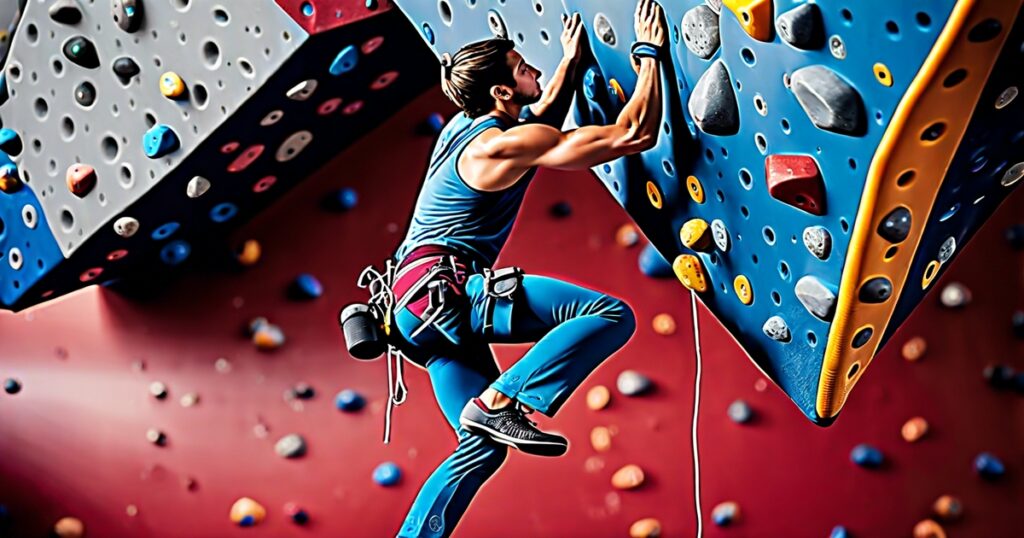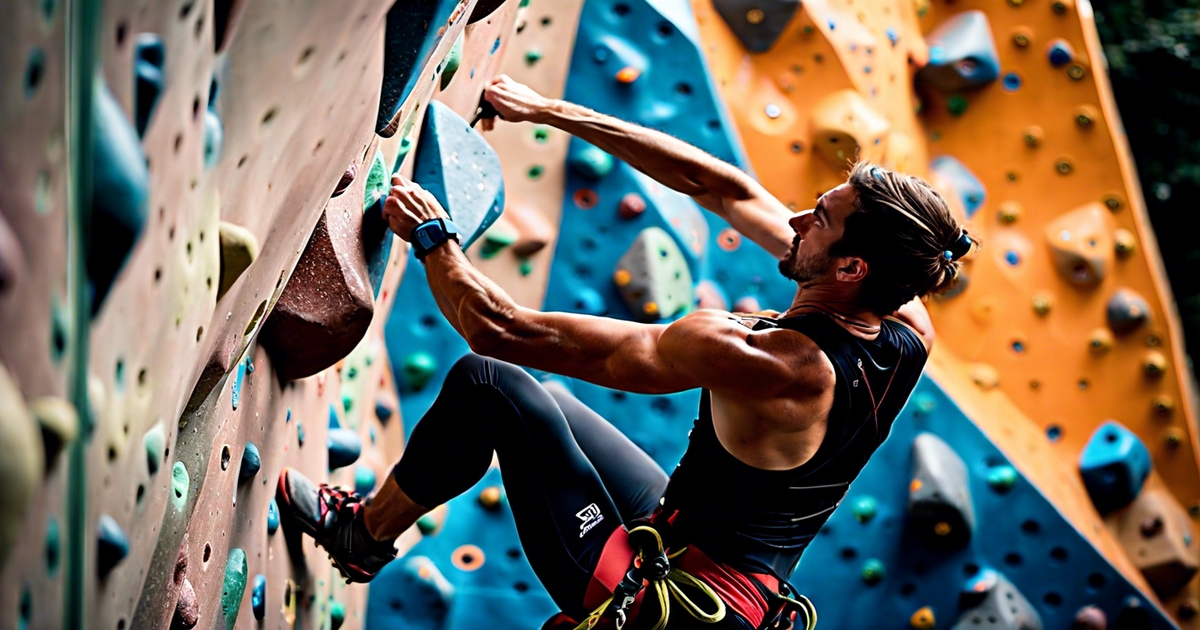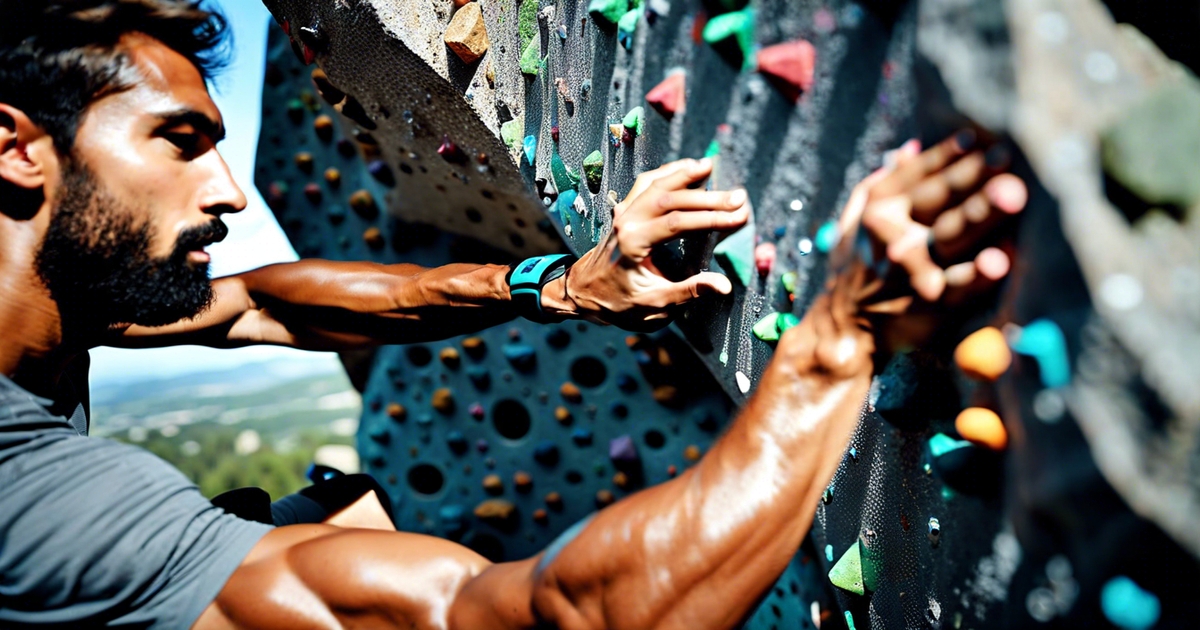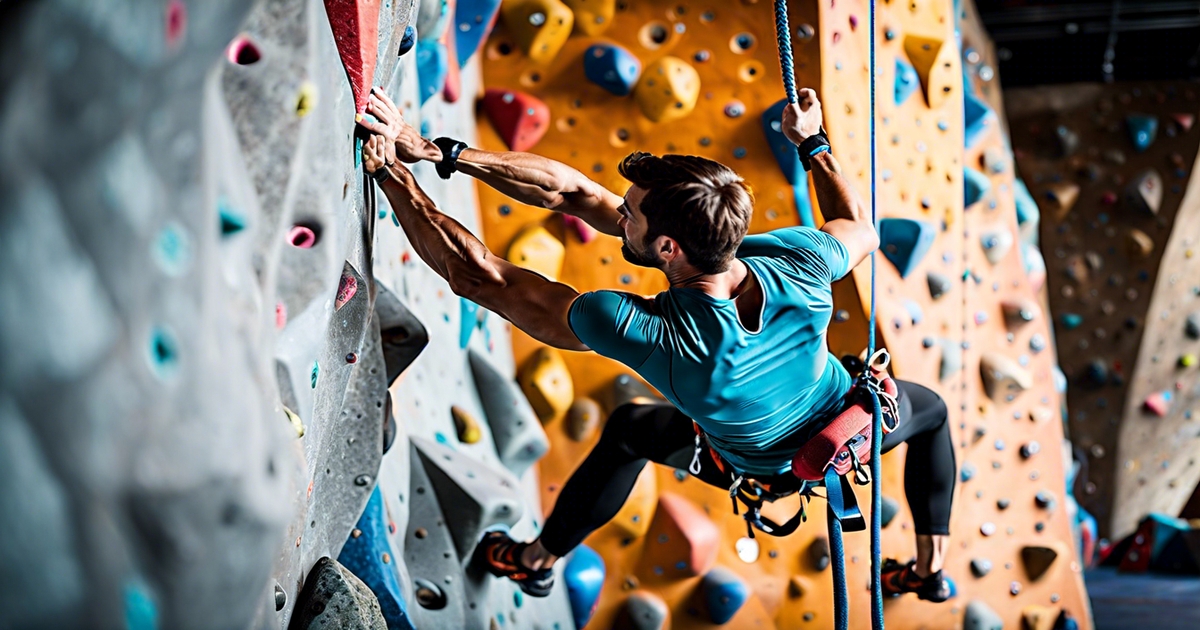Curious about the distinction between rock climbing vs bouldering? Both activities involve scaling vertical surfaces, but here’s the kicker: rock climbing typically involves taller cliffs with harnesses and ropes for safety, whereas bouldering is done on shorter walls without harnesses, relying solely on crash pads. The key difference lies in the height of the climb and the equipment used. Whether you prefer the thrill of conquering towering heights or the challenge of solving intricate boulder problems, understanding these nuances can help you choose the right adventure for your next vertical pursuit.
Key Takeaways: Rock Climbing vs Bouldering
- Try Both: Experiment with both rock climbing and bouldering to see which style resonates with you the most.
- Safety First: Prioritize safety by using proper equipment and techniques to minimize risks associated with climbing.
- Build Strength: Engage in climbing regularly to improve physical fitness, strength, and problem-solving skills.
- Community Support: Join climbing gyms or clubs to connect with like-minded individuals and learn from experienced climbers.
- Personal Preference: Select your climbing style based on your preferences, whether it’s the endurance challenge of rock climbing or the problem-solving aspect of bouldering.
- Continuous Learning: Embrace the learning curve in climbing, as each session offers opportunities for growth and skill development.
Understanding Climbing Styles
Differences in Techniques
Rock climbing involves ascending natural rock formations using ropes and harnesses for safety. Bouldering, on the other hand, is a form of climbing done on shorter walls without ropes.
While rock climbing focuses on endurance and long routes, bouldering emphasizes strength and problem-solving skills. Bouldering routes, called problems, are typically short but intense.
Equipment Variation
Rock climbers use a variety of gear including ropes, harnesses, carabiners, and climbing shoes. In contrast, boulderers rely on crash pads to cushion falls due to the lower height of bouldering walls.
The type of equipment used in each style reflects the different demands of rock climbing and bouldering. Rock climbers need gear that supports longer climbs and belaying techniques, while boulderers require minimal equipment for short, powerful moves.
Environmental Impact
Rock climbing often takes place outdoors on cliffs or mountainsides, impacting natural rock formations. In contrast, bouldering can be done both indoors and outdoors on artificial walls or rock faces.
The environmental impact of rock climbing versus bouldering varies due to the different settings where each style is practiced. Indoor bouldering gyms provide controlled environments that minimize impact on outdoor landscapes.
Community and Social Aspects
Both rock climbing and bouldering foster strong communities of climbers who share a passion for the sport. Climbing gyms offer opportunities for socializing, training, and learning new techniques.
Climbers often form close-knit communities based on their preferred style, whether it’s rock climbing or bouldering. These communities provide support, encouragement, and camaraderie among climbers with similar interests.
Exploring Rock Climbing
Range of Activities
Rock climbing encompasses a wide range of climbing activities, from traditional to sport climbing and bouldering. Climbers engage in various styles such as bouldering, top-roping, lead climbing, and more. Each style offers unique challenges and experiences for climbers to enjoy.
Climbers can enjoy the flexibility of climbing both indoors, outdoors, and bouldering. Indoor rock climbing gyms provide a controlled environment for climbers to practice and improve their skills. On the other hand, outdoor climbing allows climbers to experience the thrill of scaling natural rock formations in picturesque settings.
Equipment and Techniques
The equipment and techniques used in rock climbing vary based on the specific discipline within the sport. For example, traditional climbers rely on placing removable protection like cams and nuts into cracks in the rock for safety. On the other hand, sport climbers clip quickdraws pre-hung on bolts along the route for protection.
Rock climbers need to have a good understanding of proper techniques such as footwork, balance, and body positioning to navigate challenging routes effectively. Learning these techniques is crucial for climbers to progress in the sport and tackle more difficult climbs with confidence.
Safety Measures
Safety is paramount in rock climbing, and climbers must be well-versed in safe practices to prevent accidents and injuries. Using a harness, helmet, and belay device correctly are essential safety measures that all climbers must adhere to. Proper communication between climbing partners is crucial for a safe climbing experience.
Environmental Impact
As outdoor rock climbing gains popularity, it is essential for climbers to be mindful of their environmental impact. Climbers should follow Leave No Trace principles by minimizing their impact on the natural surroundings, staying on designated trails, and properly disposing of waste. By practicing responsible climbing ethics, climbers can help preserve the beauty of outdoor climbing areas for future generations.
Delving into Bouldering
Bouldering Basics
Bouldering is a form of rock climbing that revolves around short, challenging climbs known as boulder problems. Unlike traditional rock climbing, bouldering does not involve the use of ropes or harnesses. Climbers typically tackle these boulder problems on boulders or artificial indoor bouldering walls.
Climbers who engage in bouldering focus on honing their physical strength and problem-solving abilities to navigate through intricate routes. The lack of safety equipment means that falling is part of the sport, making it crucial for climbers to develop techniques to land safely without injuries.
Bouldering Techniques
In bouldering, mastering essential techniques is key to overcoming challenging boulder problems. Climbers often encounter various types of holds, such as crimps, slopers, and pinches, each requiring a different approach. By understanding how to grip these holds effectively, climbers can progress through difficult routes with more precision.
One fundamental technique in bouldering is dyno, where climbers perform dynamic movements to reach distant holds. This explosive technique requires a combination of power, coordination, and timing to execute successfully. Footwork plays a crucial role in bouldering, helping climbers maintain balance and stability on the wall.
Safety Considerations in Bouldering
While bouldering offers an exhilarating challenge, safety remains a top priority for climbers. Without the protection of ropes, falls in bouldering can lead to injuries if not executed properly. Therefore, learning how to fall correctly by tucking in limbs and rolling upon impact is essential for minimizing the risk of injury.
Moreover, using crash pads strategically placed beneath the climbing area can help cushion falls and reduce the impact on the climber’s body. Climbers also need to be mindful of their surroundings and ensure that the landing zone is clear of obstacles that could pose a hazard during a fall.
Techniques and Equipment
Climbing Techniques
Climbers utilize different techniques when approaching rock climbing versus bouldering. In rock climbing, climbers often focus on endurance and sustained movement over long distances. On the other hand, bouldering emphasizes powerful moves and problem-solving skills within shorter, more intense sequences.
In bouldering, climbers typically tackle shorter routes called “problems.” These problems require dynamic movements that demand strength and coordination. In contrast, rock climbing routes are longer and may involve sustained endurance to reach the top.
Essential Equipment
The choice of equipment plays a crucial role in both rock climbing and bouldering. In rock climbing, climbers rely on gear such as ropes, harnesses, carabiners, and quickdraws. These tools are essential for safety and protection while ascending longer routes.
On the other hand, bouldering requires minimal equipment compared to rock climbing. Climbers use crash pads placed at the base of the boulder to cushion falls. Climbers may use chalk to improve grip on holds during challenging moves.
Terminology and Safety Measures
Understanding climbing terminology is vital for effective communication and safety. Terms like “trad” (traditional climbing) and “sport climbing” denote different styles of climbing with distinct safety practices. Climbers must also be aware of terms like “crux” (the most difficult section of a route) and “beta” (sequence of moves).
Safety measures such as using proper footwork, employing correct body positioning, and utilizing handholds effectively are crucial for preventing injuries while climbing. Having a knowledgeable spotter in bouldering or belayer in rock climbing enhances safety during ascents.
Types of Climbing Routes
Rock climbing offers various types of routes based on the terrain and style of ascent. Climbers may encounter routes that involve cracks, slabs, overhangs, or dihedrals, each requiring specific techniques to navigate successfully. Bouldering routes also vary in difficulty, with problems classified by grades ranging from beginner-friendly to extremely challenging.
Courtesy and Ethics
In both rock climbing and bouldering communities, climbers adhere to certain courtesies and ethics to preserve the natural environment and ensure a positive experience for all participants. Practices like minimizing impact on climbing areas, respecting wildlife habitats, and properly disposing of waste contribute to sustainable climbing practices.
Protection and Risk
Climbing Styles
Rock climbing and bouldering require different levels of protection depending on the style and terrain. Climbers engaging in traditional rock climbing typically use ropes, harnesses, and anchors for protection. In contrast, boulderers rely on crash pads to cushion falls due to the shorter height of boulders.
Safety Equipment
The proper use of safety equipment is crucial in minimizing the risk of injuries. Crash pads are essential for boulderers to provide a soft landing surface in case of falls. Using ropes and harnesses in traditional rock climbing helps protect climbers from significant falls by providing a means of aid.
Risk Assessment
Climbers must assess the level of protection needed based on the climbing style and terrain. Evaluating the potential risks involved in each climb allows climbers to choose the appropriate protective gear. Climbing in challenging terrains or attempting difficult routes requires higher levels of protection to ensure safety.
Balancing Thrill and Safety
Balancing the thrill of climbing with safety measures is crucial to mitigate potential risks. While the adrenaline rush of climbing and scaling heights can be exhilarating, it is essential to prioritize safety by using the necessary protective gear. Climbers must strike a balance between pushing their limits and ensuring their well-being.
Choosing Based on Preferences
Physical Exertion
Rock climbing involves longer routes, requiring endurance and strength to complete. Climbers tackle multi-pitch climbs that can last for hours, demanding sustained physical effort. On the other hand, bouldering focuses on short, powerful sequences that demand intense bursts of energy.
Risk Tolerance
Rock climbers face higher risks due to the height of their climbs and the potential for falls from significant heights. They rely on ropes, harnesses, and anchors for protection. In contrast, boulderers climb without ropes, closer to the ground, relying on crash pads for safety.
Climbing Environment
Rock climbers often venture into outdoor settings, embracing natural elements and diverse landscapes. They climb cliffs, mountains, and rock faces in various locations. Meanwhile, boulderers typically engage in their activity on shorter walls or large boulders in indoor gyms or designated outdoor areas.
Personalization of Experience
Choosing between rock climbing and bouldering allows individuals to tailor their climbing experience based on personal preferences. Some may prefer the thrill of ascending challenging rock faces while others enjoy the dynamic movements and problem-solving aspects of climbing.
Body Engagement
Rock climbing engages the entire body as climbers ascend vertical routes using a combination of strength, balance, and technique. It demands endurance and mental focus throughout the climb. Bouldering, with its shorter and more intense sequences, requires explosive power and precise movements.
Closing Thoughts
Understanding the differences between rock climbing and bouldering can help you make an informed choice based on your preferences. Both styles offer unique challenges and rewards, catering to different skill levels and goals. Whether you seek the endurance test of rock climbing or the problem-solving aspect of bouldering, there is a style that suits your interests and abilities. Consider trying both to experience the diverse thrills each has to offer.
Now that you have insights into these climbing styles, grab your gear, hit the gym, or head outdoors to put your newfound knowledge to the test. Embrace the adventure, challenge yourself, and most importantly, have fun exploring the vertical world of climbing! Keep pushing your limits and discovering new heights.
Frequently Asked Questions
What are the main differences between rock climbing and bouldering?
Rock climbing involves ascending tall rock faces with ropes and harnesses, focusing on endurance and technique. Bouldering is done on shorter walls without ropes, emphasizing strength, problem-solving skills, and climb.
Is bouldering safer than rock climbing?
In general, bouldering is considered safer than rock climbing due to the lower height of the walls involved. However, both activities, like climbing, carry inherent risks that can be mitigated through proper training, equipment use, and safety precautions.
What kind of equipment is needed for rock climbing?
Essential equipment for rock climbing includes a harness, climbing shoes, a helmet, ropes, carabiners, and belay devices. Additional gear may include chalk bags, quickdraws, cams, nuts, and helmets depending on the type of climbing and location.
How does one choose between rock climbing and bouldering?
Consider your preferences regarding height, endurance, strength, and problem-solving. If you enjoy longer climbs with a focus on technical skills and stamina, rock climbing might be more suitable. For those who prefer shorter, powerful moves with an emphasis on strength and agility, bouldering, climb could be the preferred choice.
Are there specific techniques used in rock climbing and bouldering?
Rock climbing techniques involve various styles such as face climbing, crack climbing, and slab climbing. Bouldering techniques include dynamic moves, static holds, heel hooks, toe hooks, and mantling. Both disciplines require mastering footwork, body positioning, balance, grip strength, and route reading skills.





